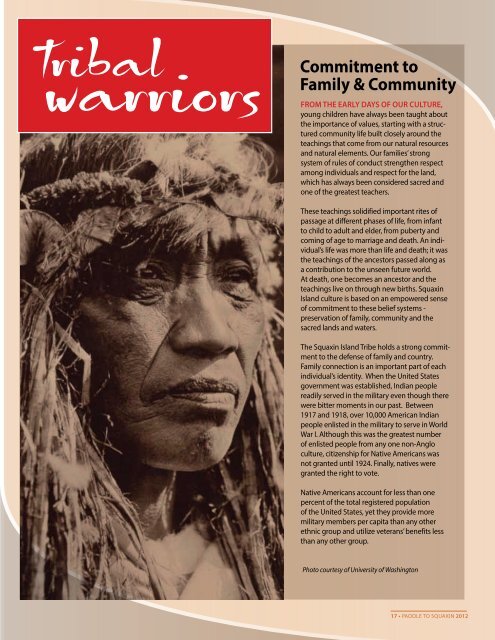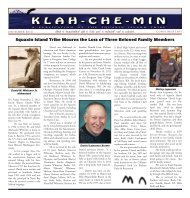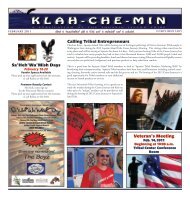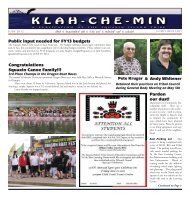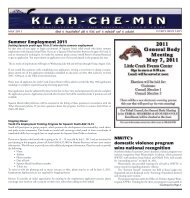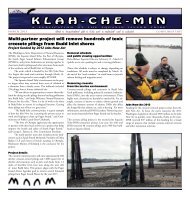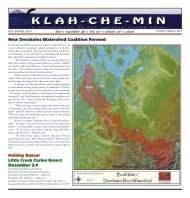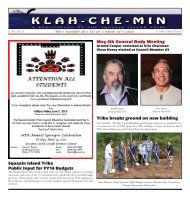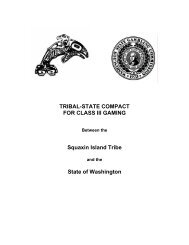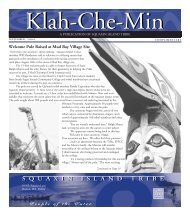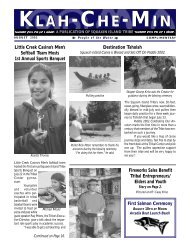Canoe Journey Guidebook - Squaxin Island Tribe
Canoe Journey Guidebook - Squaxin Island Tribe
Canoe Journey Guidebook - Squaxin Island Tribe
Create successful ePaper yourself
Turn your PDF publications into a flip-book with our unique Google optimized e-Paper software.
Tribal<br />
warriors<br />
Commitment to<br />
Family & Community<br />
From the early days of our culture,<br />
young children have always been taught about<br />
the importance of values, starting with a structured<br />
community life built closely around the<br />
teachings that come from our natural resources<br />
and natural elements. Our families’ strong<br />
system of rules of conduct strengthen respect<br />
among individuals and respect for the land,<br />
which has always been considered sacred and<br />
one of the greatest teachers.<br />
These teachings solidified important rites of<br />
passage at different phases of life, from infant<br />
to child to adult and elder, from puberty and<br />
coming of age to marriage and death. An individual’s<br />
life was more than life and death; it was<br />
the teachings of the ancestors passed along as<br />
a contribution to the unseen future world.<br />
At death, one becomes an ancestor and the<br />
teachings live on through new births. <strong>Squaxin</strong><br />
<strong>Island</strong> culture is based on an empowered sense<br />
of commitment to these belief systems -<br />
preservation of family, community and the<br />
sacred lands and waters.<br />
The <strong>Squaxin</strong> <strong>Island</strong> <strong>Tribe</strong> holds a strong commitment<br />
to the defense of family and country.<br />
Family connection is an important part of each<br />
individual’s identity. When the United States<br />
government was established, Indian people<br />
readily served in the military even though there<br />
were bitter moments in our past. Between<br />
1917 and 1918, over 10,000 American Indian<br />
people enlisted in the military to serve in World<br />
War I. Although this was the greatest number<br />
of enlisted people from any one non-Anglo<br />
culture, citizenship for Native Americans was<br />
not granted until 1924. Finally, natives were<br />
granted the right to vote.<br />
Native Americans account for less than one<br />
percent of the total registered population<br />
of the United States, yet they provide more<br />
military members per capita than any other<br />
ethnic group and utilize veterans’ benefits less<br />
than any other group.<br />
Photo courtesy of University of Washington<br />
17 • paddle to squaxin 2012


